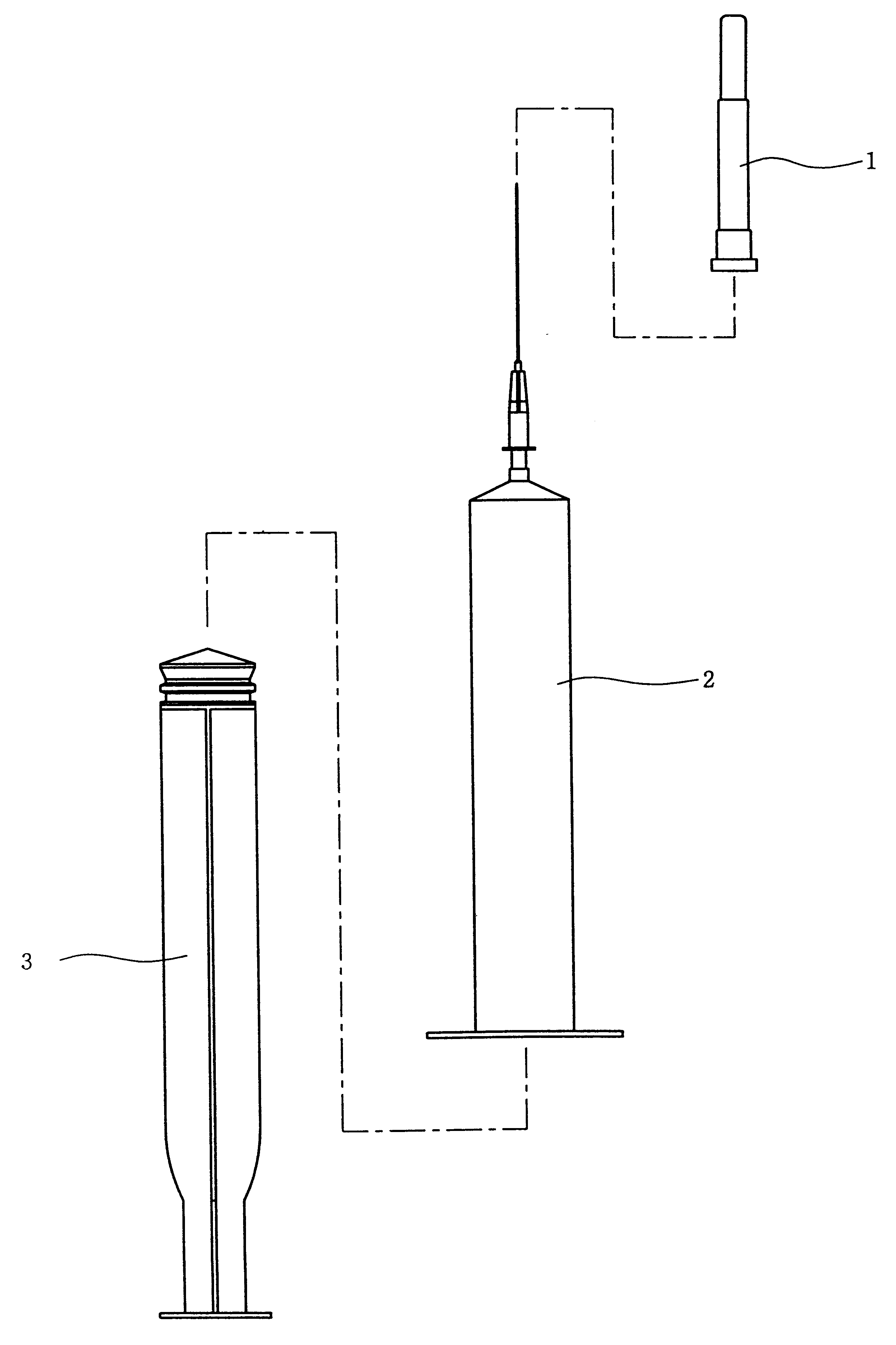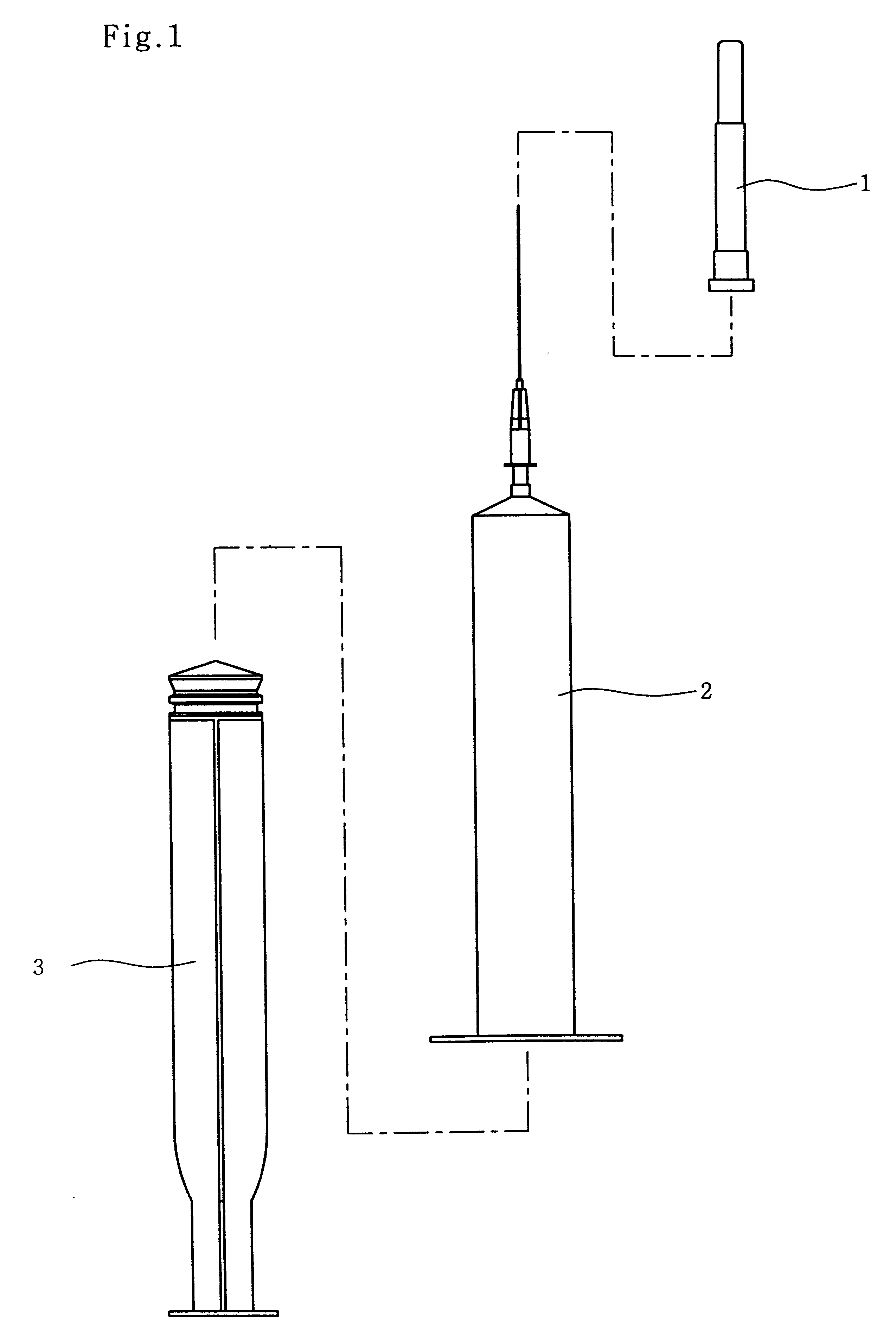Biodegradable disposable syringe
- Summary
- Abstract
- Description
- Claims
- Application Information
AI Technical Summary
Benefits of technology
Problems solved by technology
Method used
Image
Examples
preparation example 1
To a 500 mL Erlenmeyer's flask filled with nitrogen gas 118 g of succinic acid, 121.7 g of 1,4-butanediol and 0.1 g of tetrabutyltitanate as a catalyst, were added while slowly increasing the temperature until it reached 200.degree. C. When the temperature reached 200.degree. C., the reaction mixture was allowed to react for 2 hrs and then theoretical mass of water was effused. Then 0.1 g of antimony acetate, 0.2 g of dibutyltin oxide, 0.07 g of tetrabutyltitanate as catalysts, and 0.2 g of trimethyl phosphate as a stabilizer were added. The temperature was raised and a polycondensation reaction was performed under 0.3 torr at 245.degree. C. for 155 min. The sample of biodegradable resin taken at this point had a melt index of 15 (190.degree. C., 2160 g), number average molecular weight of 31,000, weight average molecular weight of 190,000 and melting point of 117.degree. C. as measured by DSC method.
preparation example 2
To a 500 mL Erlenmeyer's flask filled with nitrogen gas, 5.9 g of succinic acid, 6.3 g of 1,4-butanediol and 0.1 g of tetrabutyltitanate as a catalyst were added to carry esterification by effusing water while slowly increasing the temperature. When the temperature reached 200.degree. C., theoretical mass of water was effused completely to give 8.6 g of aliphatic low molecular weight polymer with its molecular weight around 10,000. Then, 76.1 g of terephthalic acid, 135.2 g of 1,4-butanediol, and 0.2 g of tetrabutyltitanate a catalyst were added to the reaction mixture to carry esterification by effusing methanol while slowly increasing the temperature. After methanol was effused completely while keeping the temperature at 205.degree. C., 29.5 g of succinic acid and 43.8 g of adipic acid were added to carry further esterification. After water was effused while keeping the temperature at 180.degree. C., 0.1 g of antimony trioxide, 0.3 g of dibutyltin oxide, 0.07 g of tetrabutyltitana...
example 1
Disposable syringes were manufactured by using polyester resins having 117.degree. C. of melting point produced in the above Preparation Examples 1 and 2 under 130-140.degree. C. by means of injection molding. The test results of syringes showed that 400 kg / cm.sup.2 and 410 kg / cm.sup.2 for tensile strength, 300% and 320% for elongation, and 90% and 92% for biodegradability rate after 45 days, respectively.
The biodegradability was measured by Organic Waste Systems[O.W.S.n.v.](Dok Noord 4, B-9000 Gent, Belgium), and tensile strength and elongation were measured by UTM.
PUM
| Property | Measurement | Unit |
|---|---|---|
| Fraction | aaaaa | aaaaa |
| Pressure | aaaaa | aaaaa |
| Angle | aaaaa | aaaaa |
Abstract
Description
Claims
Application Information
 Login to View More
Login to View More - R&D
- Intellectual Property
- Life Sciences
- Materials
- Tech Scout
- Unparalleled Data Quality
- Higher Quality Content
- 60% Fewer Hallucinations
Browse by: Latest US Patents, China's latest patents, Technical Efficacy Thesaurus, Application Domain, Technology Topic, Popular Technical Reports.
© 2025 PatSnap. All rights reserved.Legal|Privacy policy|Modern Slavery Act Transparency Statement|Sitemap|About US| Contact US: help@patsnap.com


